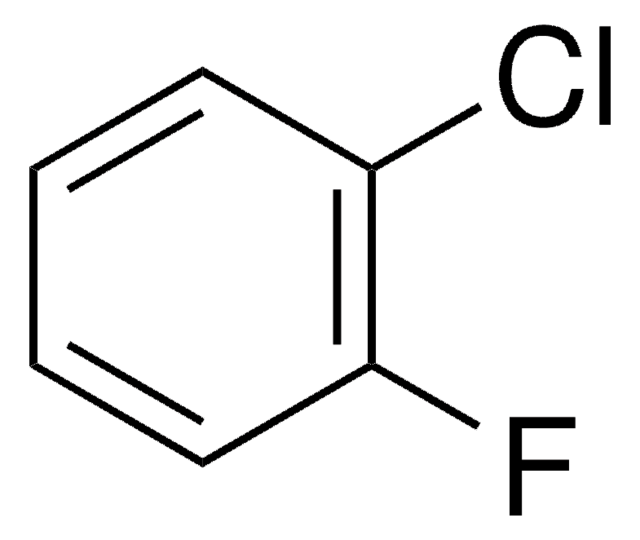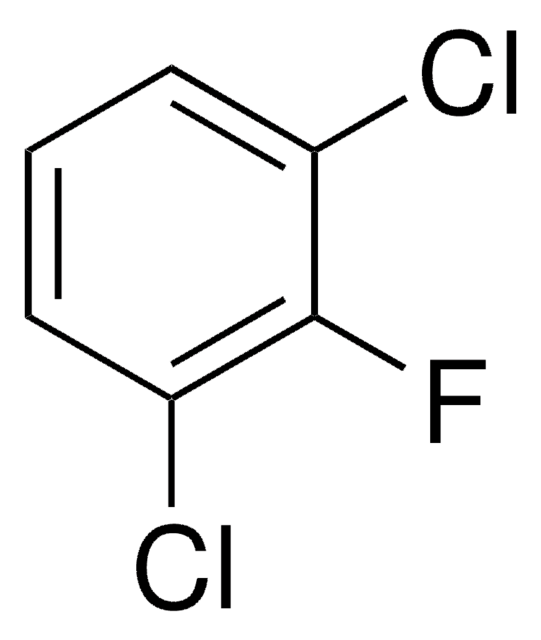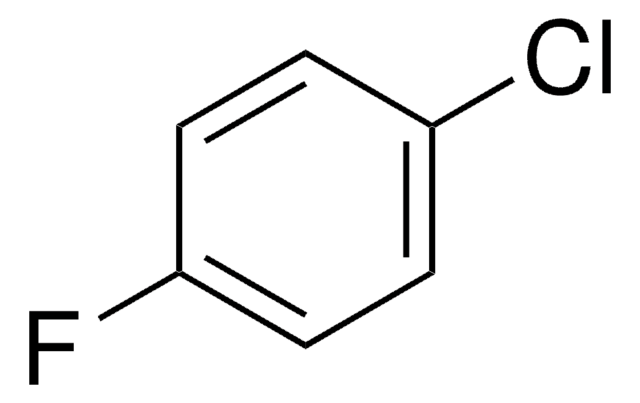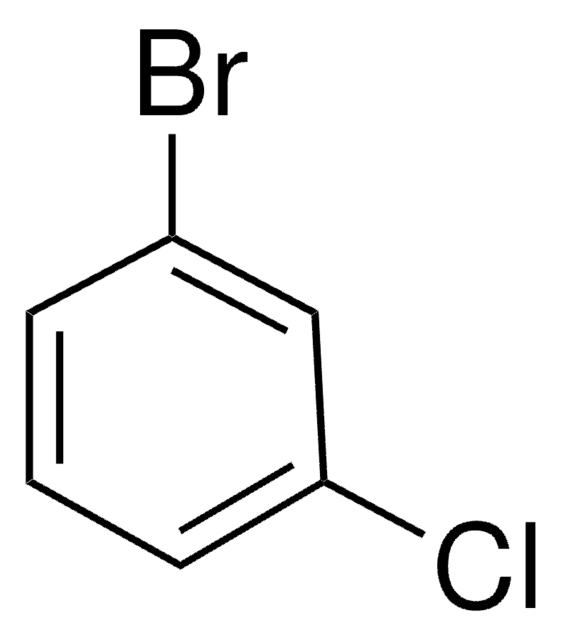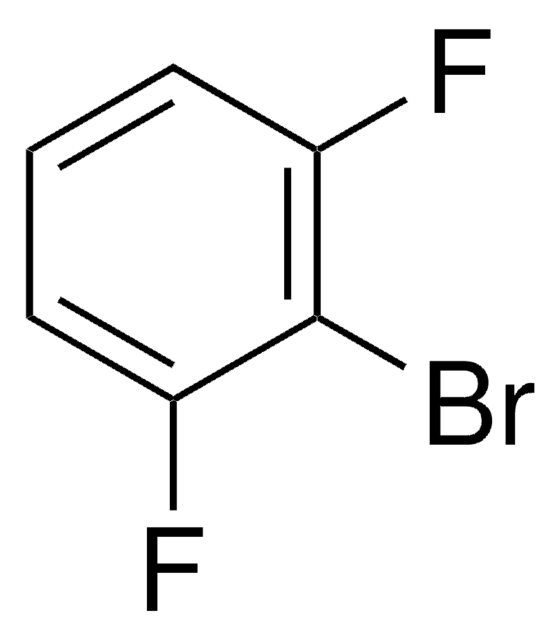추천 제품
일반 설명
Reaction of 1-chloro-3-fluorobenzene radical cation with NH3 has been investigated by FT-ICR spectrometry. It reacts with n-butyllithium to yield bicycloadducts via trapping of intermediate benzynes.
신호어
Danger
유해 및 위험 성명서
Hazard Classifications
Eye Irrit. 2 - Flam. Liq. 2 - Skin Irrit. 2 - STOT SE 3
표적 기관
Respiratory system
Storage Class Code
3 - Flammable liquids
WGK
WGK 3
Flash Point (°F)
68.0 °F - closed cup
Flash Point (°C)
20 °C - closed cup
개인 보호 장비
Eyeshields, Faceshields, Gloves, type ABEK (EN14387) respirator filter
Reactions of dihalobenzene radical cations with ammonia in the gas phase. Reactivity pattern for nucleophilic aromatic substitution.
Tholmann D and Gruetzmacher HF.
Journal of the American Chemical Society, 113(9), 3281-3287 (1991)
Antonio Ramírez et al.
Journal of the American Chemical Society, 126(45), 14700-14701 (2004-11-13)
The key elimination step for the formation of 3-chloro- and 3-fluorobenzyne from 2-chloro-6-fluorophenyllithium displays a pronounced solvent-dependent regioselectivity. 6Li and 13C NMR spectroscopic studies on 2-chloro-6-fluorophenyllithium reveal a single monomeric aryllithium, suggested by DFT computational studies to be a trisolvate.
Oriol Planas et al.
Science (New York, N.Y.), 367(6475), 313-317 (2020-01-18)
Bismuth catalysis has traditionally relied on the Lewis acidic properties of the element in a fixed oxidation state. In this paper, we report a series of bismuth complexes that can undergo oxidative addition, reductive elimination, and transmetallation in a manner
자사의 과학자팀은 생명 과학, 재료 과학, 화학 합성, 크로마토그래피, 분석 및 기타 많은 영역을 포함한 모든 과학 분야에 경험이 있습니다..
고객지원팀으로 연락바랍니다.
